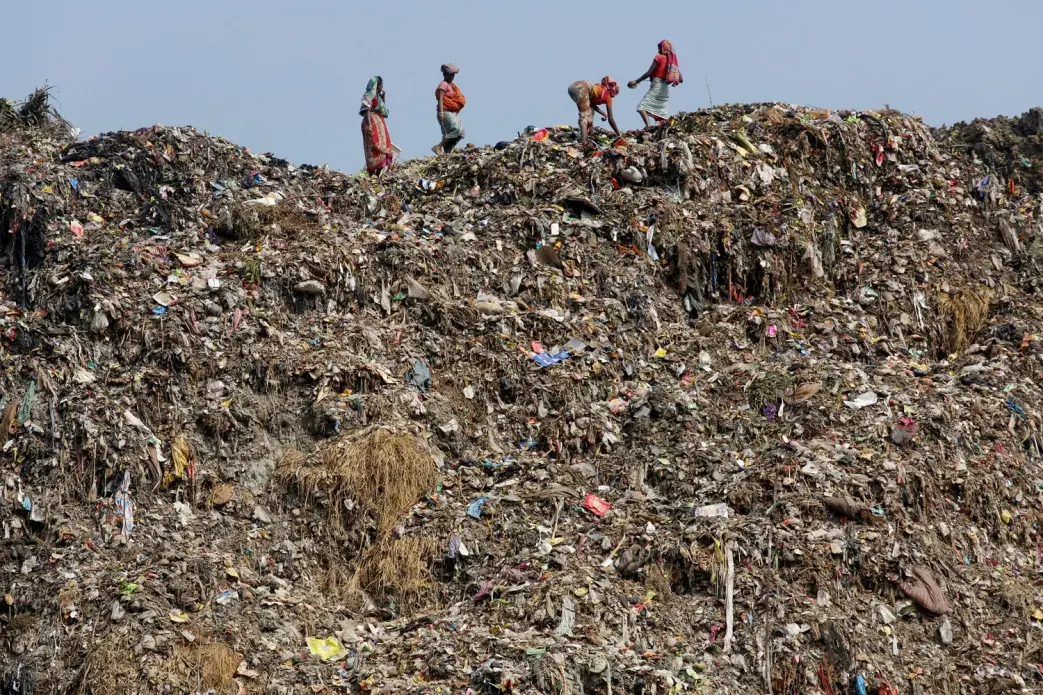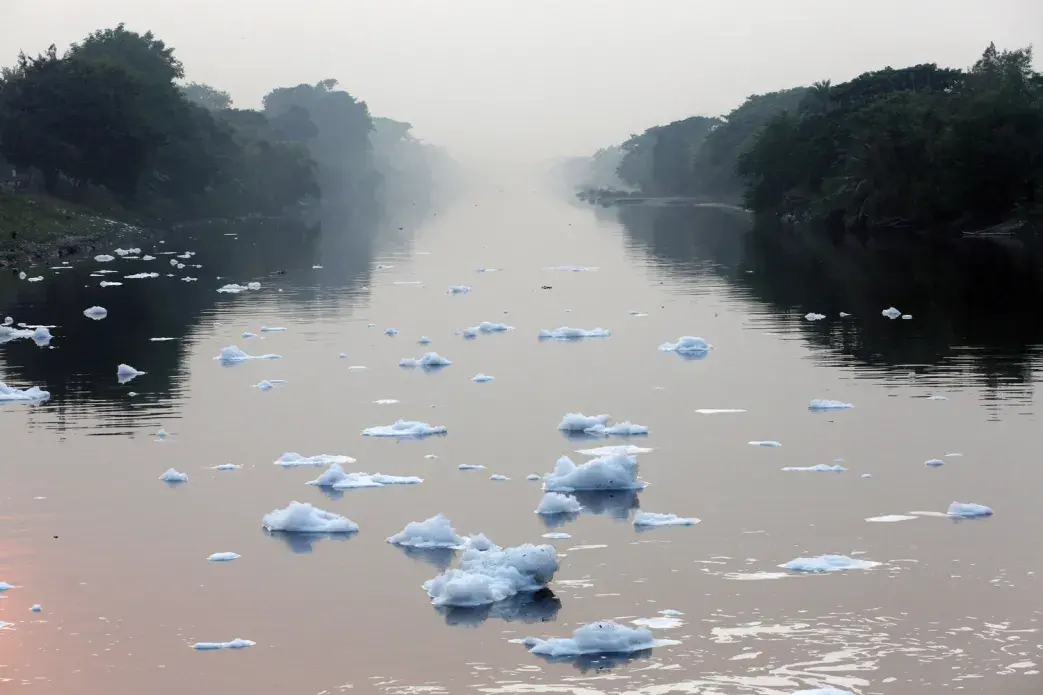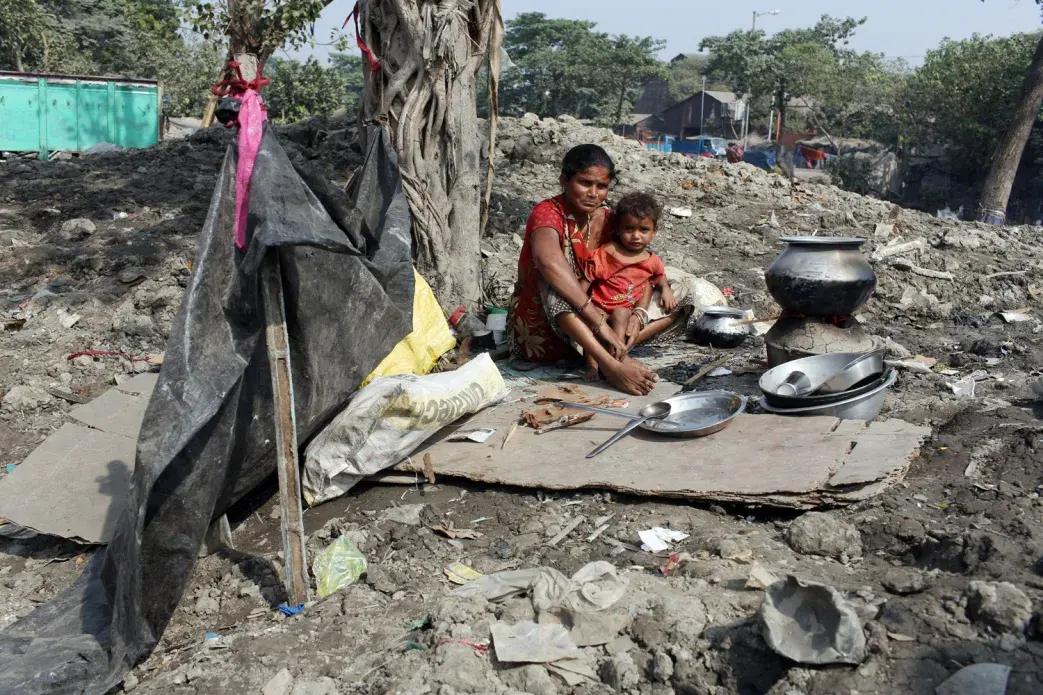"I am concerned about pollution. Lots of people are getting cancer and diseases," says Dulal Chandigiri, as he scrubs a bicycle tire outside his small workshop in the Tiljala area of central Kolkata.
He is squatting down next to the small lake which sits just a meter or two from the front door of a small shack made of corrugated iron that has been his home for the past 42 years.
"When I came here it was all paddy fields. It was 90 percent village and 10 percent city then. The population is increasing. The main problem is that lots of trees are being cut down and houses are being built up."
Kolkata is home to Dulal and some 14 million other people who reside in a sprawling metropolitan zone which spreads out from the banks of the Hooghly River, the last arm of the Ganges.
One of India's major urban hubs, the city sits on the edge of the Bay of Bengal and has attracted millions of migrants since India gained independence from Great Britain in 1947.
Today, the city appears to be at bursting point. At every crossing, traffic chokes the streets. People battle for space on the busy sidewalks and barges criss-cross the Ganges, packed with workers commuting across the great waterway.
Among the bustle however, environmental threats linger silently in the air, water and soil.
"Air quality. That is a problem for us. The suspended particulate matter in particular. So much particulates and dust particles," says Professor Binay K. Dutta, chairman of the West Bengal Pollution Control Board, as he sits in his cool air-conditioned office in the center of the city.
"During the winter months, sometimes it goes above the permissible limits. So that is a problem and much of it comes from motorcycle exhaust. Seventy to eighty percent of particulates come from automobile exhausts," he explains.
Walking the streets of Kolkata on an early morning in late November, the golden sunrise struggles to burn through the layer of smog that sits on top of the city. Cars, motorbikes and tuk-tuks cram the streets. As the city's rush hour comes into full force, every inch of road is fought over.
The scourge of air pollution is a problem facing many developing nations in Asia, especially those seeing a dramatic rise in the use of vehicles on the streets.
The Delhi-based Center for Science and Environment state in their 2012 report Air Quality and Mobility in Kolkata that "18 out of every 100,000 persons in Kolkata fall victim to lung cancer annually. Seven out of 10 people in Kolkata are afflicted with some form of respiratory ailment. Also the percentage of children suffering from upper respiratory infections, cough, wheezing and eye irritation is increasing in direct proportion to the increasing concentration of PM10 [particle pollution]."
It's not just the air which threatens the people of Kolkata. The water supply is also coming under increasing pressure as the city struggles to cope with severe pollution that originates both within the city and outside of the state.
"We have some problems with river water quality because the huge river Ganga, which flows through the heart of the city, receives a lot of contaminants from upstream," explains Dutta. "It passes through quite a few other states. There are some points where the wastewater is discharged into the river and not always the wastewater is up to the mark."
For many Kolkatans, the problem of water pollution is all too real, particularly so to the east, where the city's many waterways flow.
"In daily life, we don't use water from the canal," says Shaiful, a 25-year old fishery owner. He's standing near a sluice gate on the Bhangar Canal on the eastern outskirts of Kolkata.
Flowing off of the nearby Vidyadhari River, the canal receives water mostly from nearby tanneries which process leather. At various points along the canal, toxic wastewater from the tanneries is released into the nearby waterway.
At the sluice gate by which Shaiful is standing, the chemical-laced water is churned up and turns to foam. "We don't use it because it's black in color and smells. My fishery is on the other side of the Vidyadhari and I use the water from the river. The canal water finds its way and seeps in though."
Close by, in the rural district of Dhapa on the edge of the city, lies a small hill. At least at first glance, it appears to be a hill.
As one approaches, flocks of crows can be seen circling and thick dense smoke rises from fires dotted across its summit. Small figures can also be seen, scurrying across a haphazard surface.
This is the Dhapa landfill, the destination for much of the city's solid waste over the past 30 years. It now stands at around 10 stories in height and covers and area of approximately 10 hectares.
Like many cities across India, a growing population is bringing with it a growing problem of domestic waste.
"The disposal site has served the City of Kolkata as an uncontrolled dumping ground since 1981," states SCS Engineers, specialists in environmental engineering contracts and consulting, in their report for the Kolkata Municipal Corporation.
"Based on site volume and waste density estimates, the site is estimated to have received approximately 7 million metric tonnes (Mg) of municipal solid waste [as of 2009]. Based on 2009 disposal rates (3,500 Mg per day) and an assumed growth rate of two percent, the site will be full by late 2012."
In November 2013, the site is still clearly in use. Trucks stream through the entrance gate, piled high with domestic waste from around the city. Workers stand on the precipitous edge of the mountain of garbage, throwing various items off to their fellow workers below who sift through and segregate various items that can be recycled and sold.
It is estimated that only 10 percent of Kolkata's waste is recycled, contributing to the growing problem of the municipality's waste disposal, just a few miles from the city's downtown area.
Greater still are the implications for the Kolkata wetlands, a site meters away identified by the Ramsar Convention on Wetlands for its importance and significance.
According to the Times of India, "since there is no practice of waste segregation at source, toxic metals like zinc, nickel, lead and arsenic get dumped in Dhapa and leach into the soil. Waste water in the canal around Dhapa shows that concentrations of total dissolved solids, biological oxygen demand and concentrations of zinc and carbon are high."
Walking along the edges of Kolkata's garbage mountain gives the impression of a city slowly being choked.
Air, water and soil come under fire of Kolkata's rapid growth.

Education Resource
India's Health Care Crisis
Journalist Michael Edison Hayden and photojournalist Sami Siva report on a broad cross-section of...















































